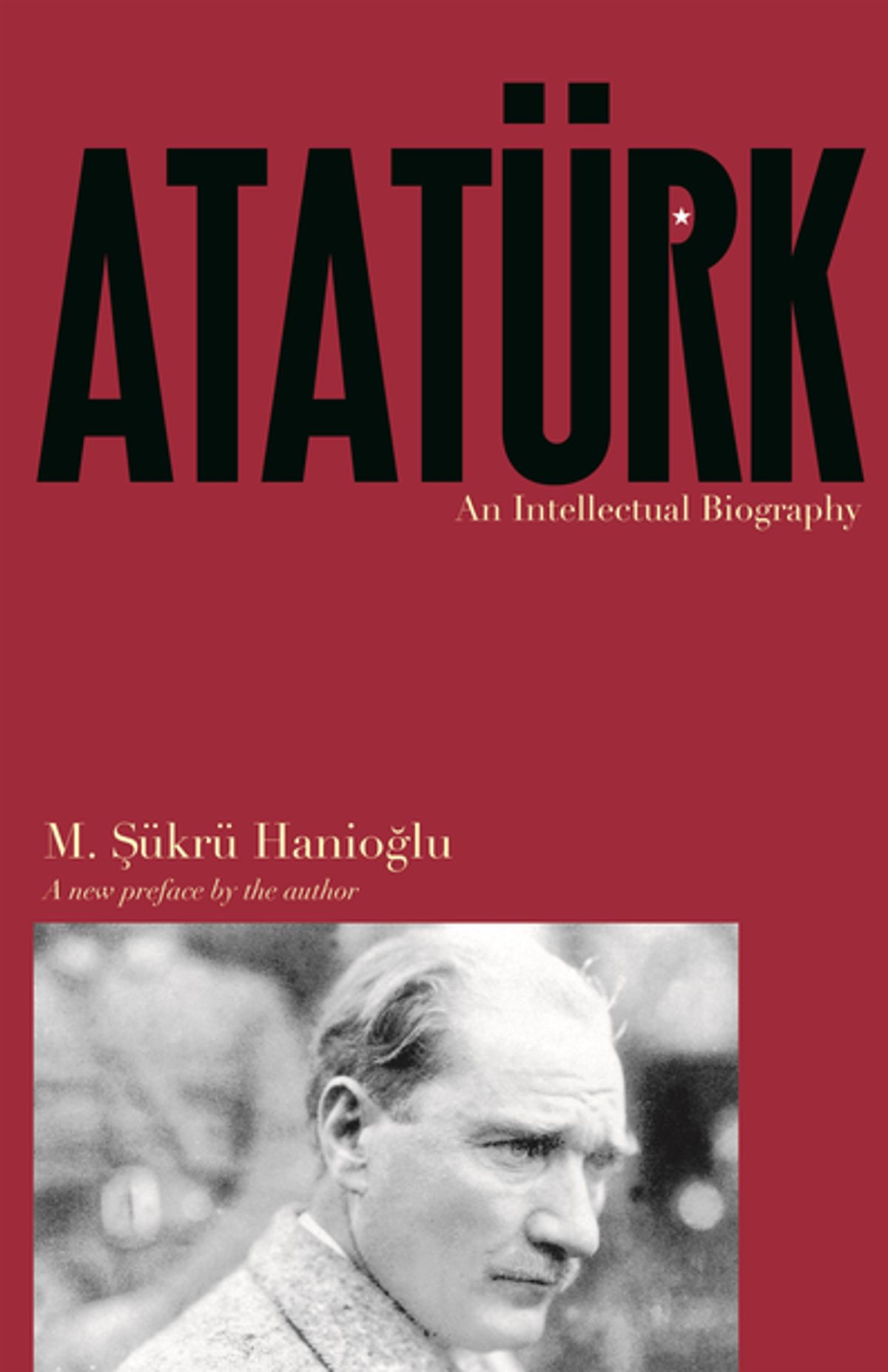As the founder of modern Turkey, Mustafa Kemal Ataturk (1881-1938) holds a unique place in twentieth century-European history as a political leader, who is still revered both nationally and internationally. The policies of transformation that he introduced carried Turkey into a secular republic from the ashes of the six-hundred-year-long Islamic Ottoman Empire. In fact the legacy that he and his supporters have remains strong in the quasi-religious political affiliation known as Kemalism.

Professor M. Sukru Hanioglu, who is the Garrett Professor in Foreign Affairs in the Department of Near Eastern Studies at Princeton University, offers a unique and in-depth study that attempts to "demythologize" Ataturk by showing he did not originate "novel ideas" but "sided with avant-garde approaches that had previously received only limited support in Ottoman and Turkish societies" (6).
The book begins with Mustafa Kemal's youth as a Muslim boy in modern-day Greece, a European province of the Ottoman Empire, continues with his military career, and ends with his project of creating a nation. Hanioglu focuses on Ataturk's intellectual and ideological evolution at every stage of his life, cogently analyzing how new ideas circulating in the late Ottoman and early Turkish societies shaped his way of thinking. While doing so, he identifies a continuity between the late Ottoman imperial era and the modern Turkish nation state as opposed to the classical Kemalist perspective that depicts him as the sole creator of unique ideas and policies (6-7).
Hanioglu first develops his argument by looking at Mustafa Kemal's birthplace, Salonika which first introduced him to the intellectual and technological advances of the time. Salonika was a great example of Ottoman cosmopolitanism (more than any other city except Constantinople) with three major religious groups: the Jews, the Muslims, and the Greek Orthodox. The city's trade increased throughout the eighteenth century, ultimately creating the largest seaport for exports in the Balkans and the fourth largest in the whole Empire (14). According to Hanioglu, being a financial hub in the region brought Salonika urbanization and intellectual movements earlier than other parts of the Empire resulting in a vivid city life with multilingual printing houses, and daily journals, Western-style cafes, literary clubs, theaters created a fertile ground for different ideologies such as nationalism and socialism (13-15, 25).Ataturk also benefited from the new ideas and institutions of learning introduced by the Tanzimat Era, which was a period of reformation beginning in 1839 and ending with the First Constitutional Era in 1876 (11).
In his formative years, Ataturk was heavily influenced by prominent intellectuals heavily influenced by Enlightenment thought, creating a clear connection to his actions while forming the Turkish Republic. One ideologue Hanioglu looks at is Colmar von der Goltz, a firm believer in Social Darwinism, who shaped Ataturk's ideas about the role of soldiers and military leaders in a society. Goltz famously said "born rulers are also great soldiers; and it is easy to conceive that the greatest military leaders must be looked for among the occupants of thrones" (34). Goltz also envisioned Germany as an ethnic based nation-state, a model difficult to apply to the multi-ethnic Ottoman Empire. Ataturk, however, embraced Goetz's nation-state ideology arguing that the Ottoman Empire should voluntarily dissolve itself and exchange different ethnic populations that would give rise to a Turkish state (37).
According to Hanioglu, scientific materialism (vulgarmaterialismus) deeply influenced Ataturk's intellectual development, as well. He saw a rigid interpretation of science as the only solution for the problems of the empire and the only way to create a prosperous and national modern society (49-51). Religion, according to Ataturk, was "the science of the masses, whereas science is the religion of the elite" (152). Both were "manufactured phenomena, created by their respective prophets in concrete historical circumstances" (53-54).
Hanioglu, however, sees Ataturk's approach to religion as pragmatist. He argues that Ataturk was actually in favor of the Turkified version of Islam, since he believed that it could serve as a useful vehicle to advance Turkish nationalism. Therefore, Ataturk used religion by referencing the Qur'an in his speeches and opening the National Grand Assembly with prayers on Friday in an attempt to unify the people (62-63). At this point, Hanioglu persuasively labels Ataturk a social engineer in the early years of the Turkish Republic, incorporating detailed tables explaining how Ataturk's religious discourse diminished as religion became less relevant in the creation of the nation-state (110-115).
Hanioglu argues that Ataturk rigidly controlled every aspect of political and social life during the westernization process of the newly established nation-state. Machiavelli, who once stated that "a true republic should pursue national strength even at the expense of individual freedom," was the source of inspiration for Ataturk's intolerant policies toward opposition movements (134, 159). "A chamber with an effective opposition," according to Ataturk, "was not an asset but an obstacle." (116-117) As a result, two opposition parties established during his rule were abolished shortly after they were formed. According to Hanioglu, Ataturk hoped to create a new type of Turkish nationalism, similar to Emile Durkheim's moralite civique, by emphasizing science, history, and language (181).
Hanioglu cogently places Ataturk in a historical context which views him as an intellectual who was a product of the society in which he lived. In order to do so, he uses Ataturk's personal works written in Ottoman Turkish, an important contribution of the book.1 Hanioglu's book is indispensable for historians interested in examining the roots of modern Turkey as well as anyone seeking to understand a nation state formation from the early twentieth century Middle East.
1 Not all Ottoman Turkish sources were available when the book was written. For instance, Presidential Archives at Cankaya are not open to the scholars without special permission and only nine of twelve volumes of Ataturk's notebooks ranging from 1904 to 1933 have been published so far. His divorced wife's personal papers are also still under lock, even though they had beed classified for 25 years after her death in 1975 (5-7).
